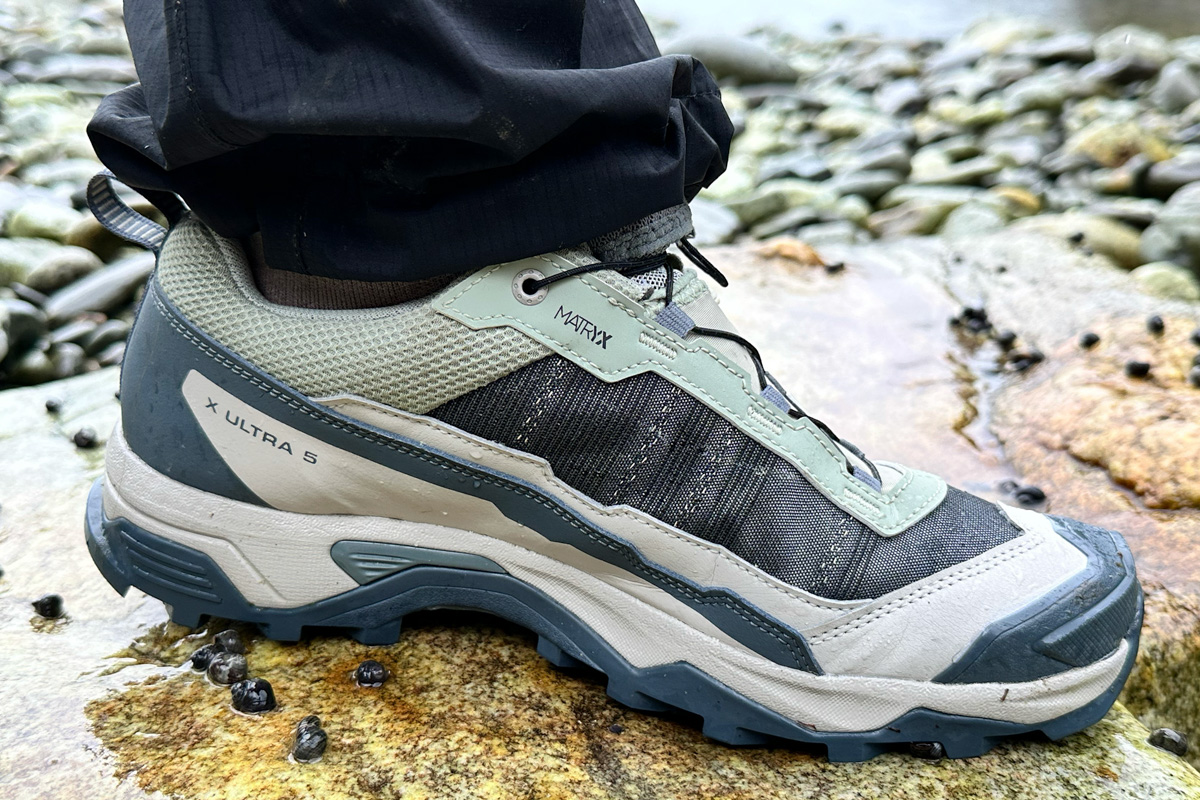
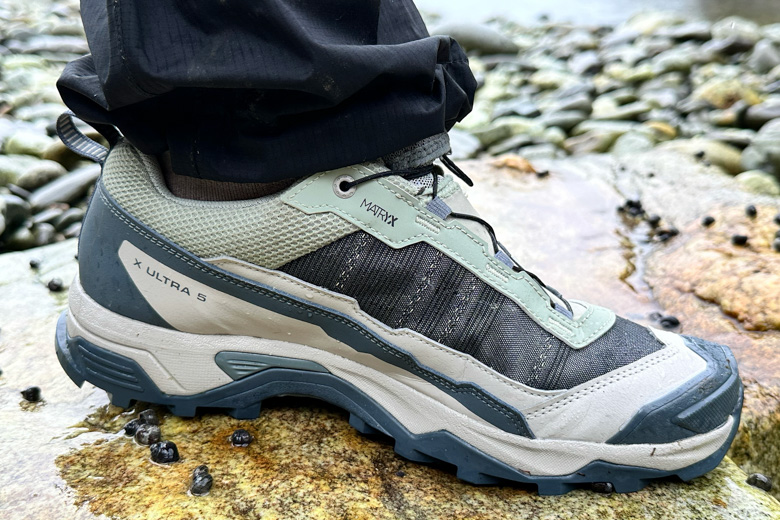
Price: $170
Weight: 1 lb. 6.6 oz. (women’s)
Waterproof: Yes (Gore-Tex)
What we like: A very capable and well-rounded performer both on and off the trail.
What we don’t: Fit may not work for everyone; not particularly plush underfoot.
See the Women's Salomon X Ultra 5 Gore-Tex See the Men's Salomon X Ultra 5 Gore-Tex
Now in its fifth iteration, Salomon’s longstanding X Ultra line is a popular choice for everything from day hiking to lightweight backpacking. I recently tested the low-top X Ultra 5 Gore-Tex on a trip to Alaska and came away with mostly positive feedback: it’s sturdy, lightweight, and easy to trust on technical terrain. I did have some complaints regarding fit and comfort, but I feel it’s a noticeable improvement over the past-generation X Ultra 4. Below, I break down the performance of the X Ultra 5 Gore-Tex—to see how it stacks up to the competition, see our articles on the best hiking shoes and best women’s hiking shoes.
Overall, the Salomon X Ultra 5 Gore-Tex proved to be a comfortable hiking shoe. Like past versions, the latest model has a lightweight and flexible build that gives it an athletic, trail runner-like feel. There’s a good amount of padding along the tongue and collar, which helps minimize pressure points, and the EVA foam midsole provides decent shock absorption. To be clear, the midsole isn’t ultra-plush (for that, I recommend exploring Hoka’s offerings), but I found it to be a nice match for navigating technical terrain, where thicker and springier foam might result in an off-balance feel. If you feel the shoes are too firm underfoot, it may be worth swapping the insole for a cushier design. My partner, who wore the men’s version of this same shoe while we were in Alaska, swapped the stock OrthoLite insole out for upgraded Superfeet insoles and found it to be a nice improvement.
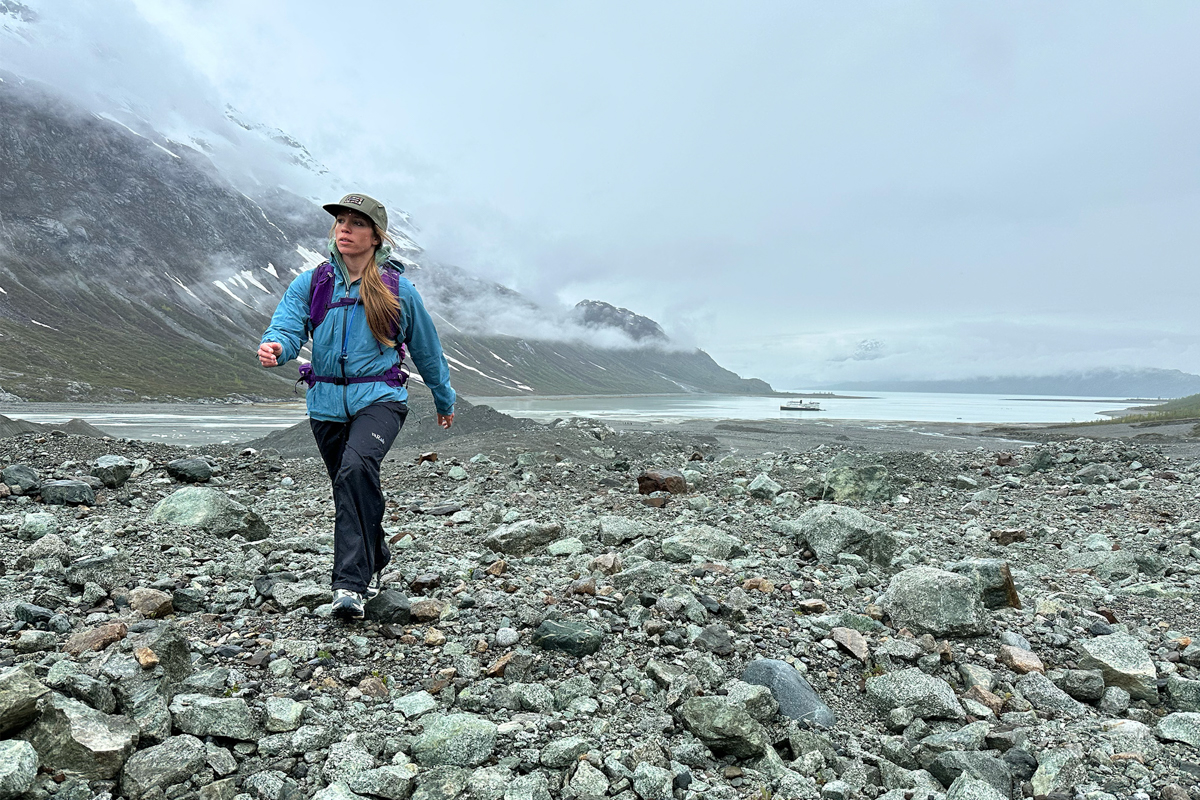
On a related note, I did come away with some complaints regarding fit. Out of the box, the X Ultra 5 felt tight around my forefoot and midfoot, which led to noticeable discomfort during the first few days of wear. Importantly, I didn’t experience any friction-related issues like blisters or hotspots, and I was able to hike down steep slopes without suffering any toe bang. After a handful of miles, the shoes loosened up a bit, and by the end of my eight-day trip, I had no issue wearing the X Ultra from sun-up to sun-down. Due to space constraints, I didn’t have many footwear options to choose from in Alaska, so the shoes spent a lot of time on my feet.
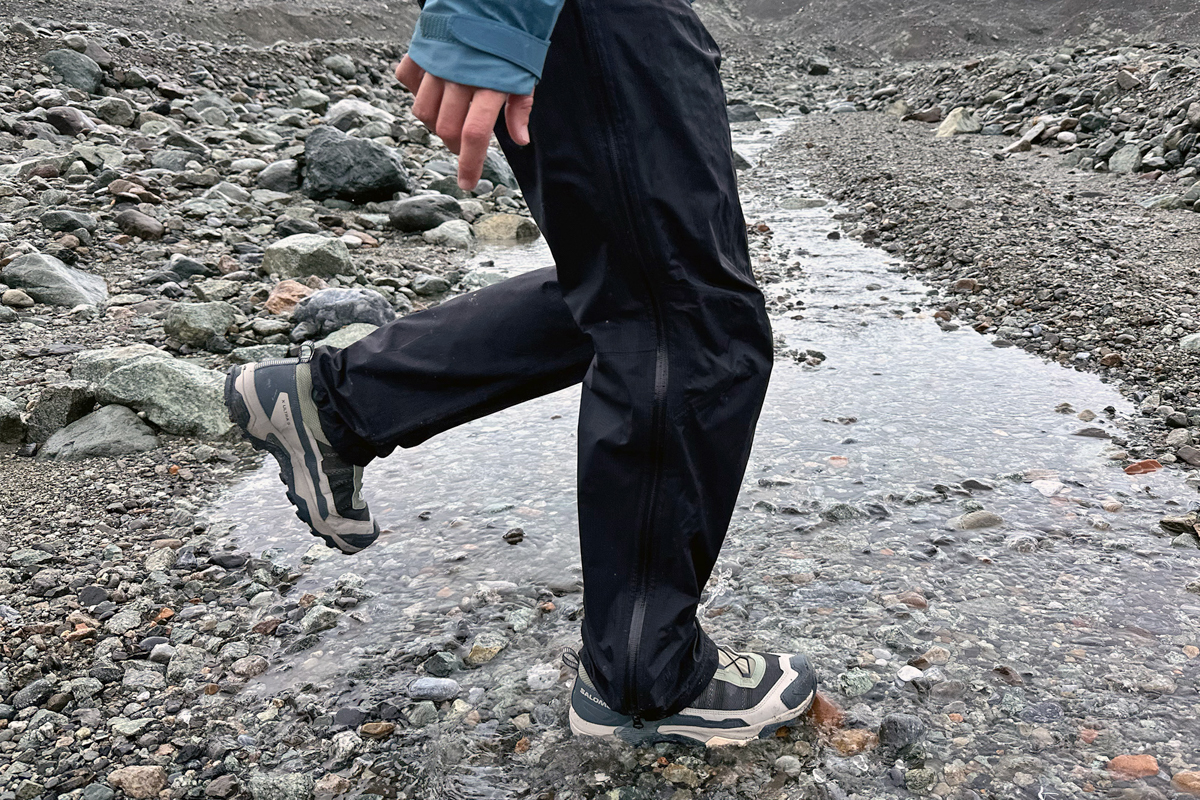
At 1 pound 6.6 ounces for the pair, the women’s X Ultra 5 Gore-Tex is competitively lightweight for the level of performance. For comparison, you can go lighter with a true trail runner like the Hoka Speedgoat 6 GTX (1 lb. 2.0 oz.), but expect to make serious compromises in areas like durability and stability. At the other end of the spectrum are sturdy hiking shoes like the Merrell Moab 3 Waterproof (1 lb. 10.1 oz.) and La Sportiva Spire GTX (1 lb. 10.2 oz.). In my opinion, the X Ultra 5 strikes a really nice middle ground: light enough that it’s easy to move quickly on the trail but substantial enough to handle technical terrain and long-term use.
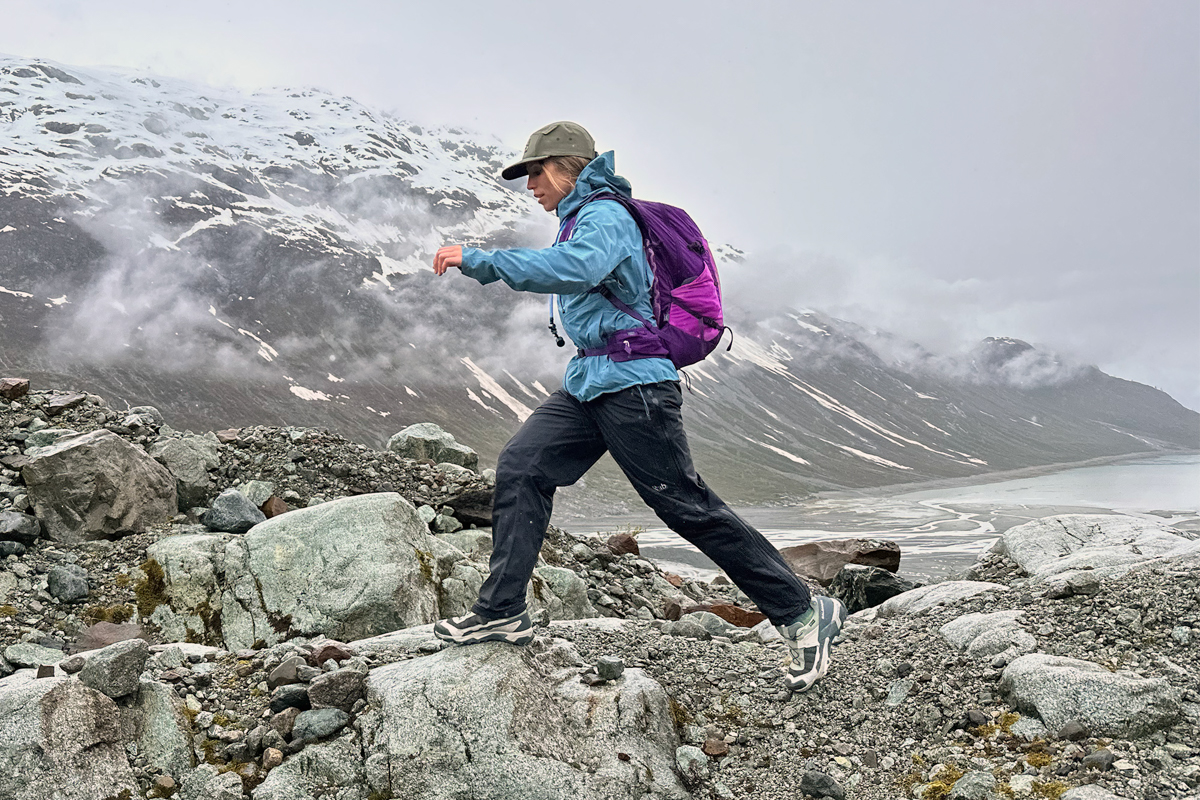
Past versions of the X Ultra were praised for their well-rounded traction, and the latest 5 carries the torch. The in-house Contagrip rubber is hardwearing and trustworthy, with chevron-shaped lugs that do a great job biting into most surfaces. For reference, I hiked over all sorts of terrain in Alaska, from sticky, clay-like mud to wet boulders, slippery logs, and loose scree. The X Ultra 5 handled it all with ease, allowing me to confidently navigate daily off-trail adventures. I even broke out into a jog on several steep descents in wet forests without any slippage. Those hiking on very muddy trails may find themselves wishing for a little more spacing between the lugs to minimize caking, but overall, I feel Salomon did a great job with the X Ultra’s outsole design.
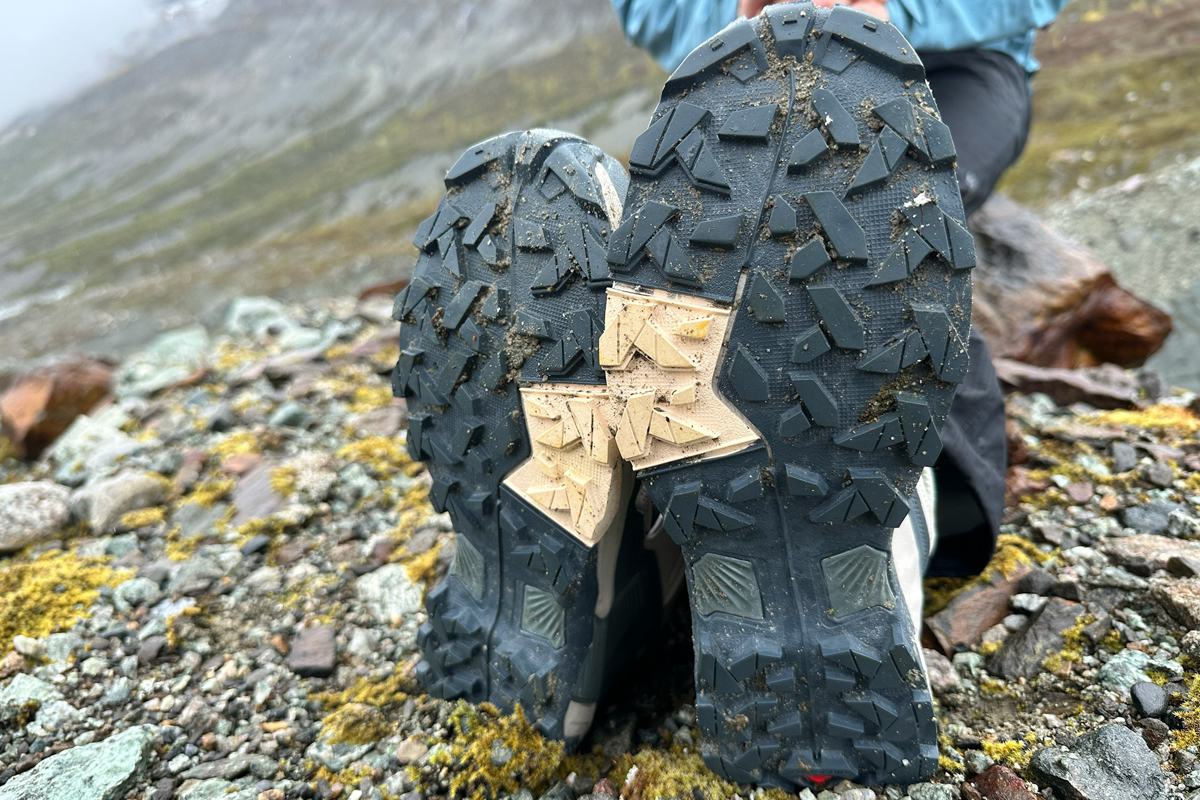
For a lightweight, low-top hiker, the X Ultra 5 is competitively stable and supportive. While not wide by any means, the base of the shoe is nicely sized, giving it a very solid, planted feel. Additionally, there’s good lateral support thanks to the Advanced Chassis, which is a molded insert embedded into the outsole, and the rear of the shoe does a good job locking the heel in place. Importantly, there’s still a good amount of flexibility at the front of the foot, which translates to a smooth and athletic feel when hiking quickly over easy terrain. My only complaint is that the Quicklace system makes it difficult to achieve a snug fit throughout the foot. Even when cinched as tightly as possible, I wasn’t able to get a tight seal at the collar, which led to a drop in support and allowed debris like pebbles and sand to enter.
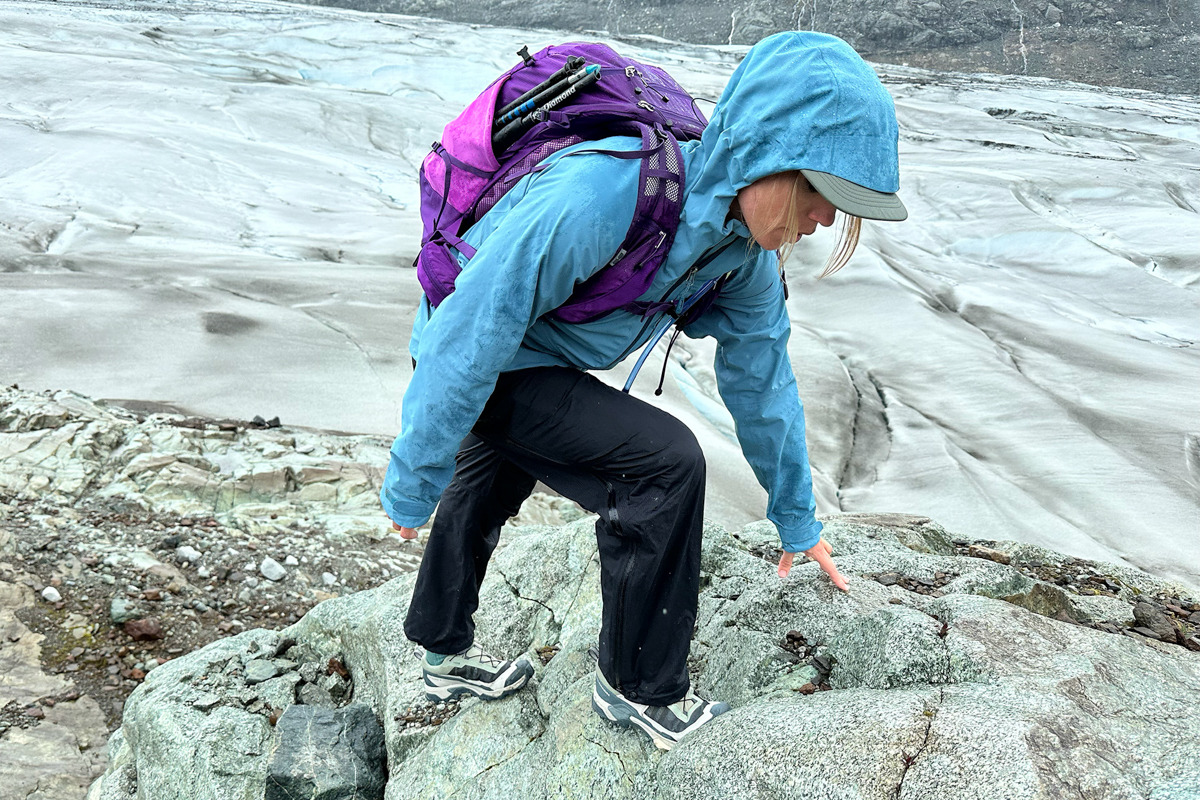
Along with being very stable for a lightweight hiking shoe, the X Ultra 5 Gore-Tex is also highly protective. Similar to their approach with the past-generation model, Salomon took the entire foot into account with the latest design: There’s a substantial bumper at the toe to guard against direct hits, a solid heel cap, and thick materials along the upper that do a nice job protecting against snags and abrasion. The hiking I did in Alaska was mostly off trail, and I’m willing to bet that any trail running shoes would have suffered serious damage after eight days. Impressively, the X Ultra 5 emerged entirely unscathed, nicely protecting against stubbed toes, scuffs, and other damage.
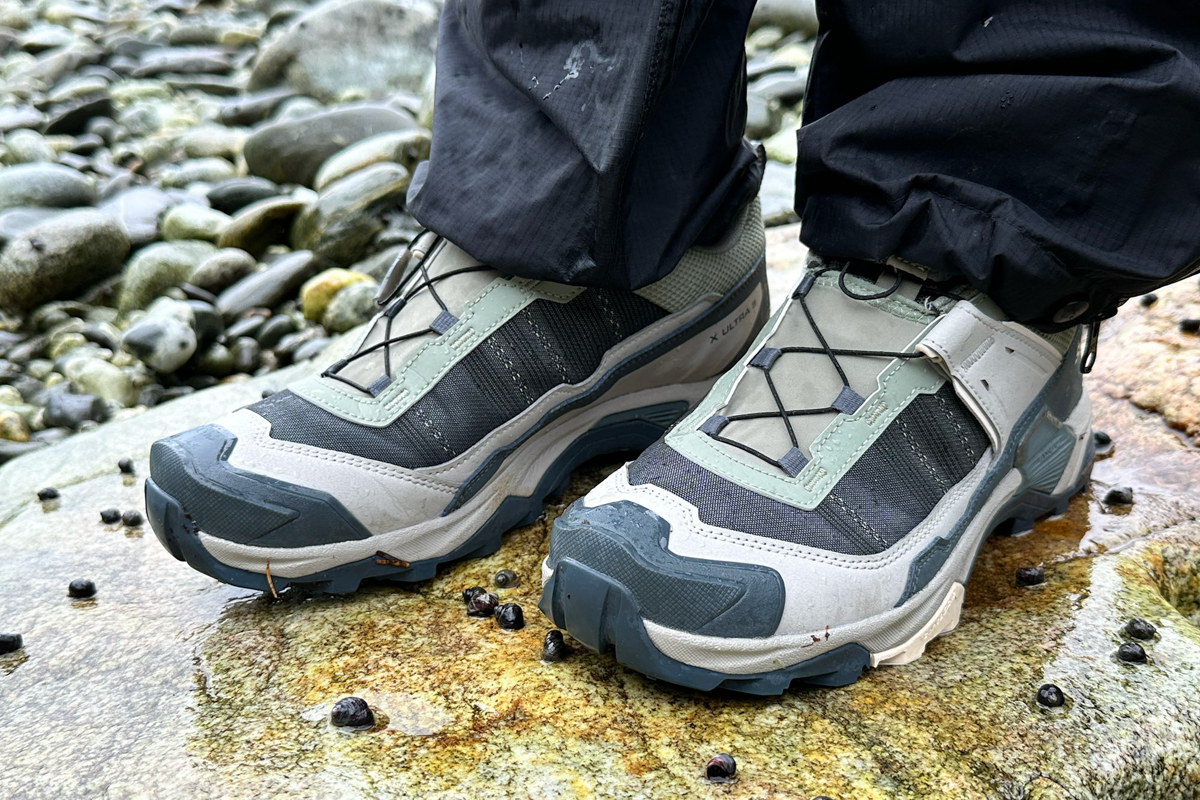
With a proven Gore-Tex lining, the X Ultra 5 is a nice companion for muddy trails and shallow water crossings. However, it’s worth noting that coverage is limited due to the shoe’s low collar, so you’ll need to be mindful when stepping into puddles or hiking across streams since water can easily enter. The shoes will also take a while to dry, should they get submerged. I ended up adding a pair of gaiters on most hikes in Alaska, which allowed me to navigate water crossings and patches of deep mud more confidently. For a boost in protection, you can also upgrade to the X Ultra 5 Mid Gore-Tex, which costs just a bit more than the low-top version I tested, but will provide much more peace of mind for deeper stream crossings or messier terrain.
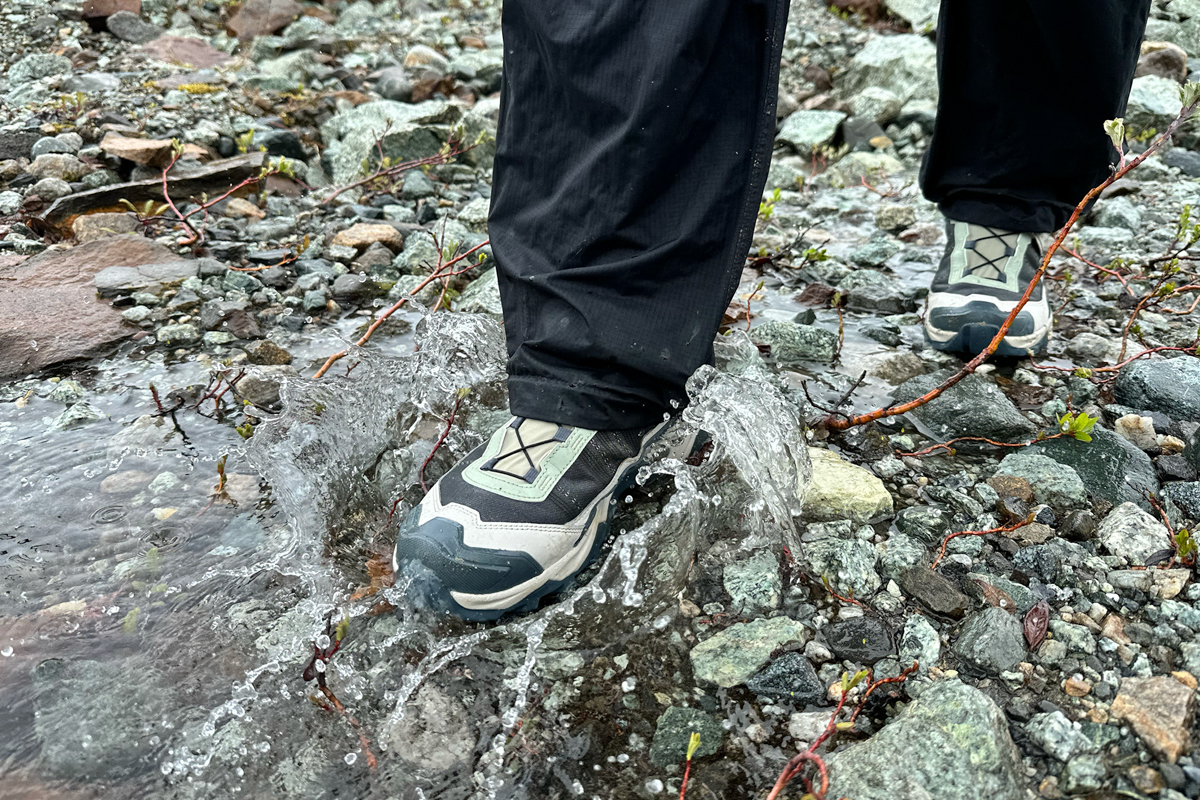
Temperatures in Alaska were chilly, hovering in the low to upper 50s Fahrenheit, so I can’t speak to the shoes’ overall breathability just yet. That said, Gore-Tex shoes as a whole run on the warm side. The previous versions were not stand out breathers, so I expect similar performance with the 5. It helps that the synthetic upper is fairly thin, and the low-riding design doesn’t trap as much heat as a mid-height boot, but this shoe will likely be warm in mid-summer temperatures. If you're planning on hiking in dry and warm environments, Salomon does make a non-waterproof version of the X Ultra 5 that features a more breathable mesh upper.
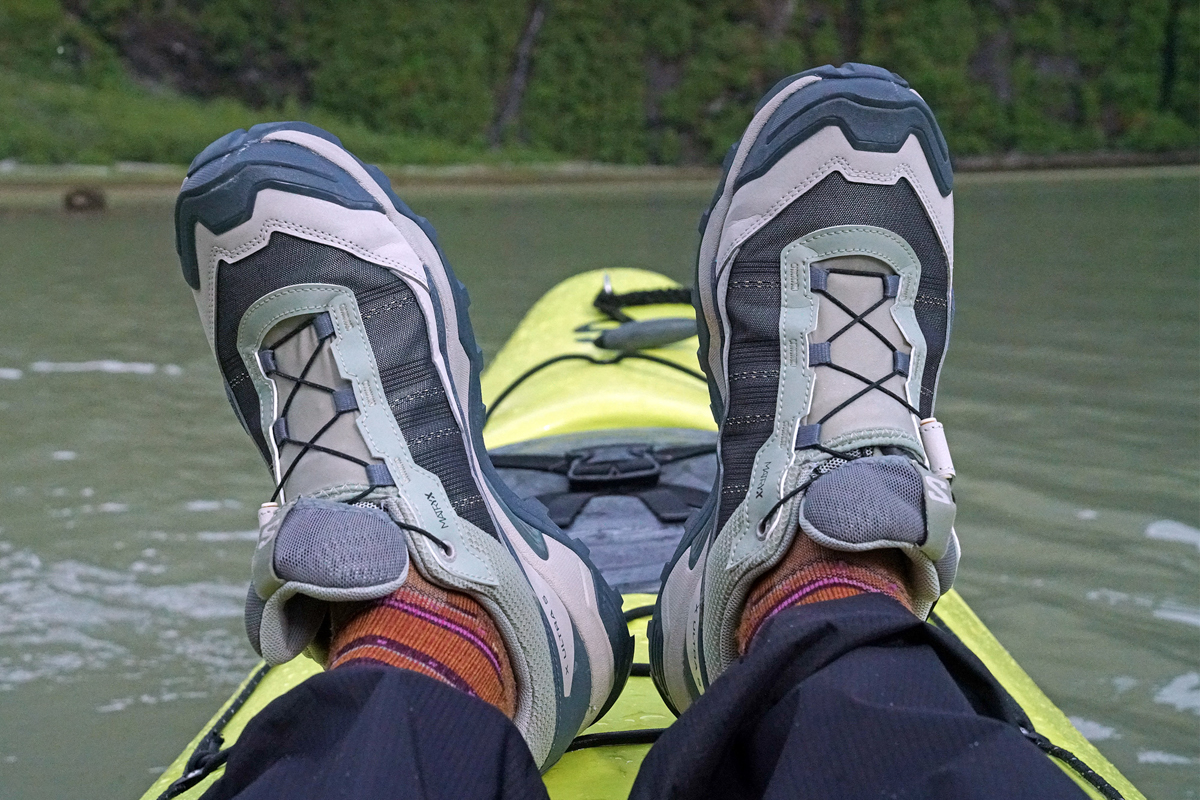
Overall, I’ve been impressed by the X Ultra 5’s build quality and longevity. The shoe has a very sturdy feel, from the beefy toe cap to the hardwearing Contagrip outsole. Salomon also included their Matryx technology, which features a mix of high-tenacity Kevlar and yarn that’s designed to boost abrasion resistance in wear-prone areas. After eight straight days of use in Alaska, plus a few follow-up hikes in the Tahoe area, I’m happy to report that my pair is holding up flawlessly with no scuffs, scrapes, or damage to any part of either shoe.
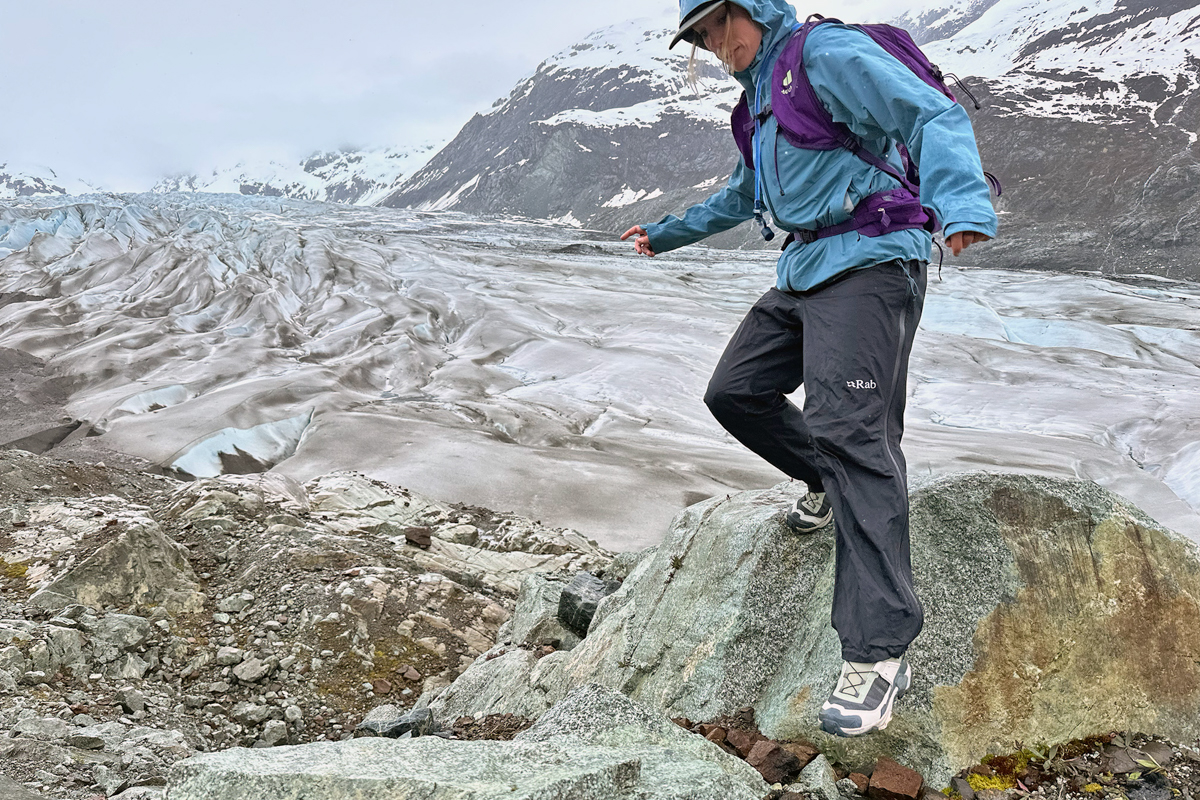
However, I do have some concerns about the Quicklaces. The entire system is pretty flimsy-feeling, including noticeably thin laces and a plastic ratcheting system that seems susceptible to breakage or failure over time. To be fair, I’ve been testing Salomon shoes for years and have never had to repair or replace Quicklaces, but they certainly add some complexity. While very fast to use, I prefer standard laces for their simplified design and better customizability.
As I mentioned above, the X Ultra 5 Gore-Tex felt a little tight at the forefoot and midfoot out of the box, but it loosened up over time. By the end of my eight-day trip in Alaska, I had no complaints regarding fit in my usual women’s size 8.5. Given my experience, I imagine that many narrow-to-average-footed hikers will be just fine, but it’s best to try the shoes on before buying to be safe. Salomon does offer the shoes in wide sizes for men, but the women’s model is only offered in standard U.S. sizes from 5 to 11.
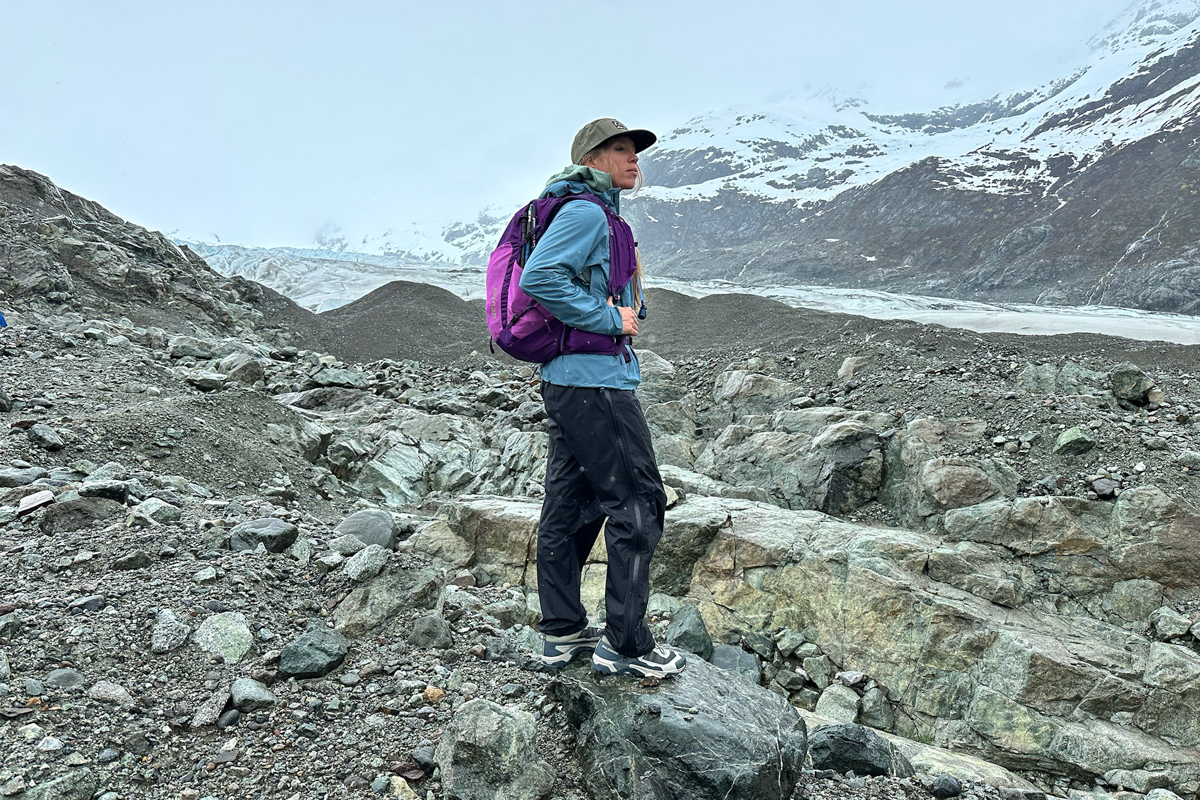
Also as mentioned, the low-top version of the X Ultra 5 includes Salomon’s signature Quicklace system. The main advantage is convenience: It’s very easy to get an even cinch with a single pull of the cord, and it all tucks away neatly into a stretchy pocket on the tongue. However, Quicklaces are more difficult to fine-tune than traditional laces. For example, I wasn’t able to loosen the laces at the midfoot while keeping them tight at the ankle. I also have concerns about the system failing over time, which would be difficult to repair in the field. In the end, I prefer traditional laces for the added customizability and ease of use in general, but it’s not a dealbreaker by any means, and many hikers will be happy with the quicker on/off process.
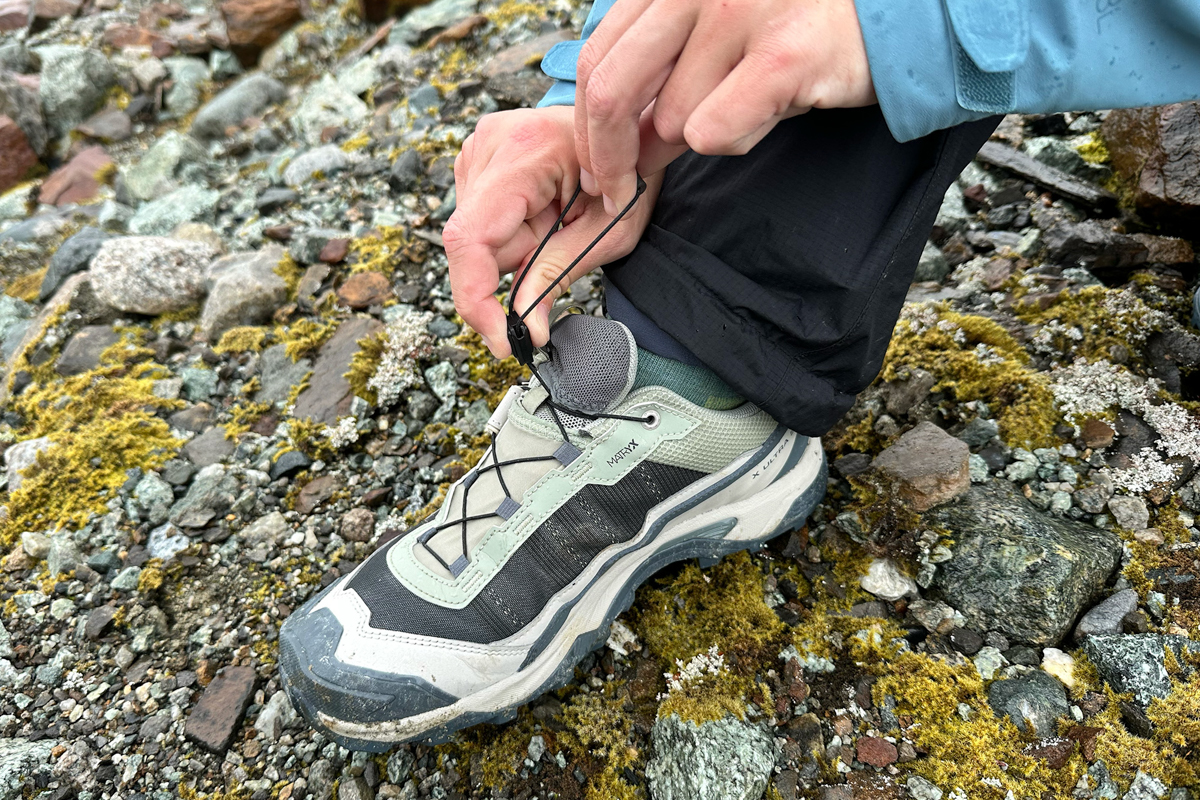
With many major outdoor brands improving their sustainable production practices, we appreciate that Salomon also made some changes with the latest X Ultra 5 Gore-Tex. Specifically, they transitioned to PFAS-free Gore-Tex, which forgoes the use of added “forever chemicals” that are notorious for their inability to break down over time. The shoe also features recycled materials like PET bottles and material waste, although Salomon doesn’t specify the exact materials, where they are used, or what percentage of the overall build is recycled.
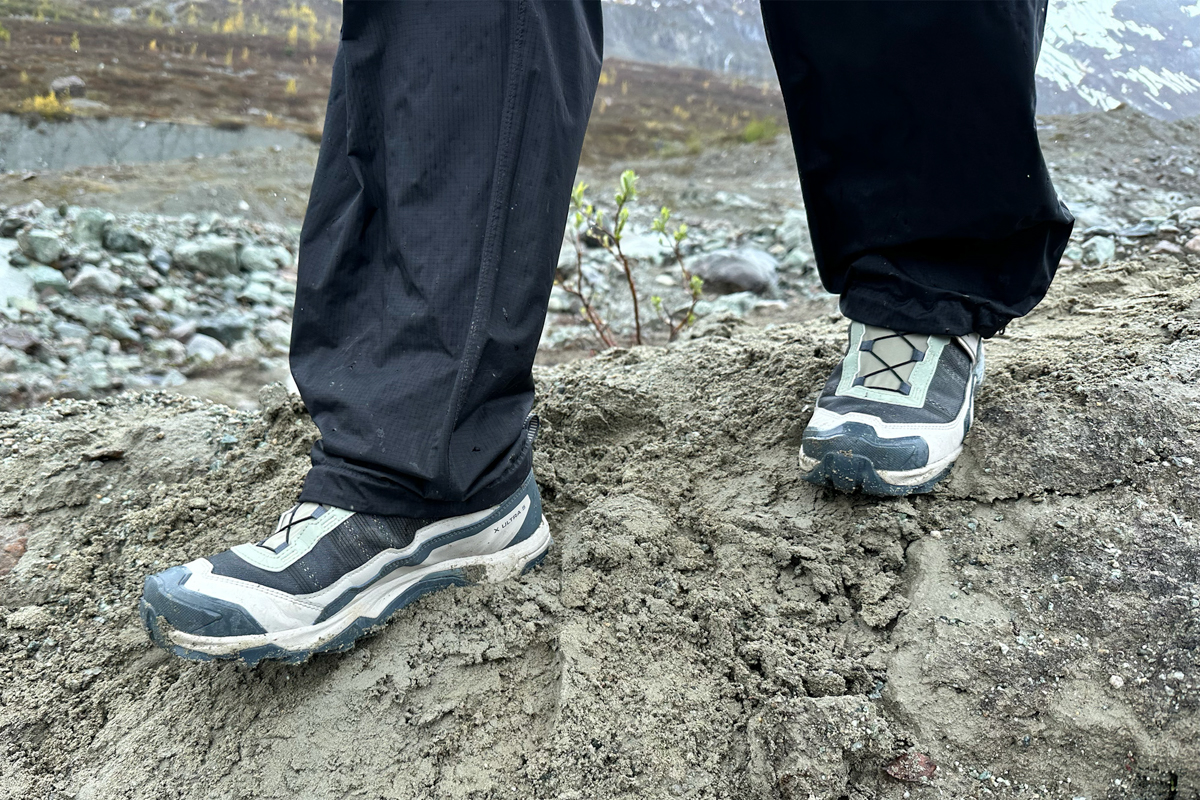
I tested the women’s version of the low-top X Ultra 5 Gore-Tex for this review, and it’s also sold in a men’s model for the same price. Comparing the two, the men’s X Ultra 5 Gore-Tex is a little heavier (1 lb. 10.8 oz. per pair) and offered in sizes from 7 to 14. For added protection and stability, there’s also a mid-height version available in both men’s and women’s styles, which retails for $185 and features standard laces rather than Salomon’s single-pull Quicklace design. As I touched on above, Salomon offers both the low-top and mid-height models in dedicated wide sizes for men (but, unfortunately, not for women). And finally, the low-top version is available in non-waterproof versions for both men and women, which are a hair lighter weight and cheaper thanks to their mesh upper and lack of waterproof membrane.
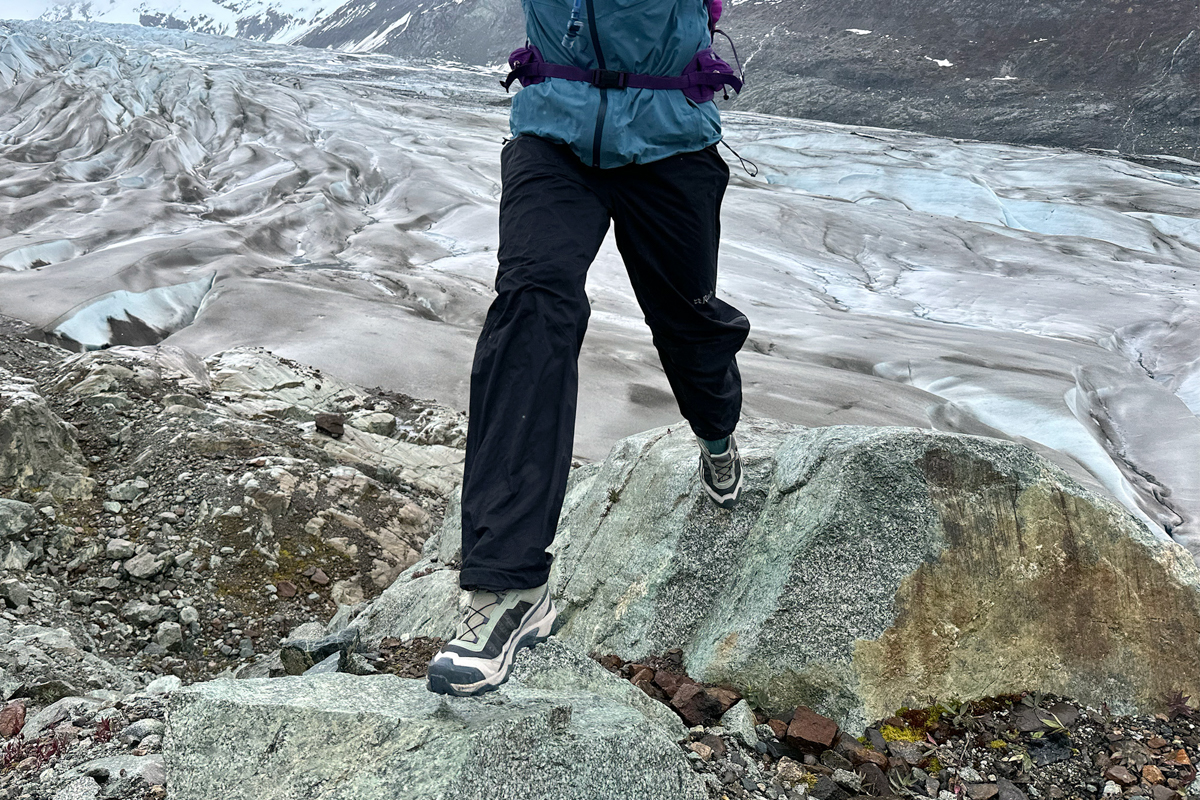
| Shoe | Price | Weight | Waterproof | Outsole | Upper |
|---|---|---|---|---|---|
| Salomon X Ultra 5 Gore-Tex | $170 | 1 lb. 6.6 oz. | Yes (Gore-Tex) | All Terrain Contagrip | Synthetic |
| Merrell Moab Speed 2 GTX | $170 | 1 lb. 5.2 oz. | Yes (Gore-Tex) | Vibram TC5+ | Synthetic/TPU |
| Salomon XA Pro 3D V9 GTX | $160 | 1 lb. 6.2 oz. | Yes (Gore-Tex) | All Terrain Contagrip | Synthetic |
| Danner Trail 2650 GTX | $190 | 1 lb. 5.0 oz. | Yes (Gore-Tex) | Vibram 460 w/ Megagrip | Leather/mesh |
The X Ultra 5 Gore-Tex offers well-rounded performance for hiking and lightweight backpacking, but the hiking shoe space is very competitive. Another design we love is Merrell’s Moab Speed 2 Gore-Tex. For the same price as the Salomon, the Moab Speed 2 features a similarly lightweight (1 lb. 5.2 oz.) build that will appeal to day hikers and weight-conscious backpackers alike. Both shoes are reminiscent of trail runners but with a healthy dose of added protection and support. In parsing out the differences, the Moab Speed has a slightly cushier and more forgiving feel, but the wide toe box and lack of security at the heel resulted in a slightly sloppy feel during testing. If you’re headed out on challenging terrain, we think the X Ultra is the better match.
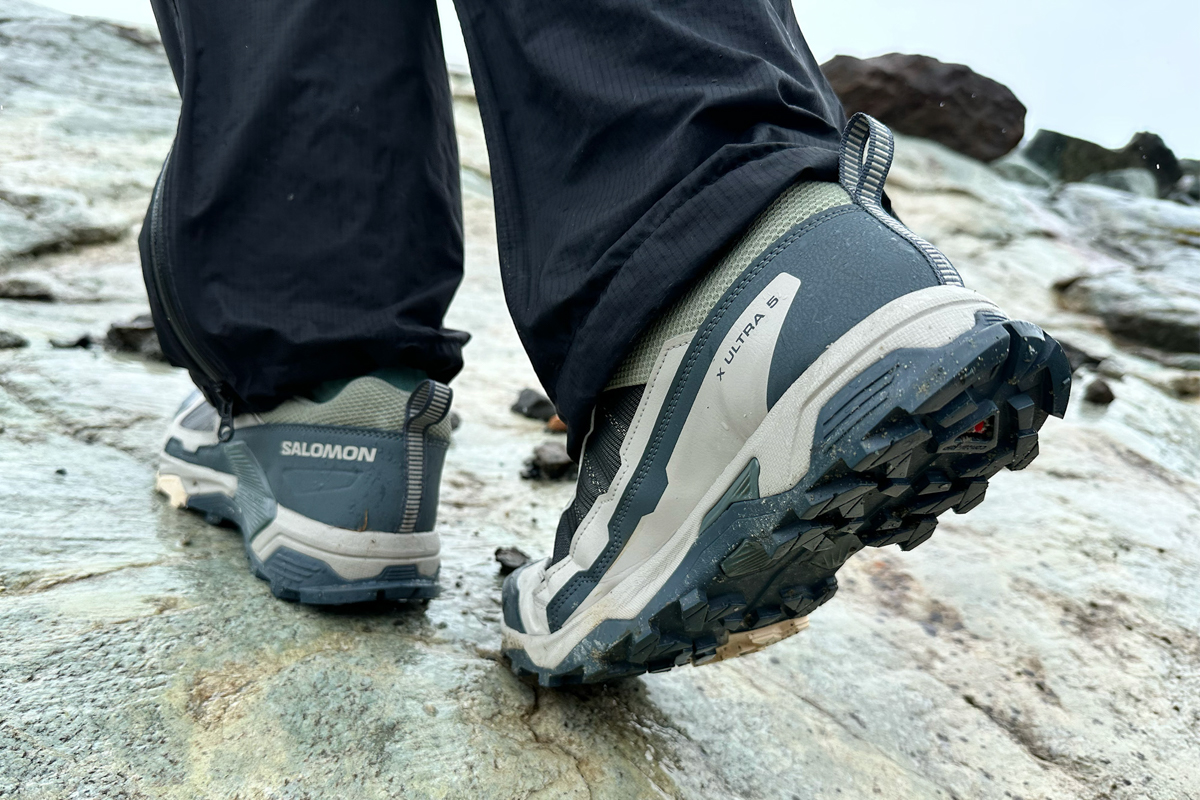
It's also worth considering Salomon’s own XA Pro 3D V9 Gore-Tex. Technically billed as a trail running shoe, we’ve found the XA Pro to be even better suited for day hiking and mellow overnights. Compared to the X Ultra 5, the XA Pro is noticeably plusher underfoot but won’t save you much cash or weight. Both shoes feature the brand’s single-pull Quicklace system, reliable Gore-Tex waterproofing, and solid protection and stability for such lightweight designs. In the end, we’d go with the X Ultra 5 for technical adventures and when carrying a heavier pack, but the XA Pro 3D is a slightly more comfortable option for those who stick to the trail.
A final option to have on your radar is Danner’s light-but-capable Trail 2650 GTX. At just 1 pound 5 ounces per pair, the Trail 2650 is competitively lightweight with a running shoe-like feel to match. It’s also more comfortable out of the box than the X Ultra 5, very grippy with a Vibram outsole, and built to last with a partial-leather upper, TPU shank, and thick rubber bumpers at the toe and heel. The X Ultra 5 offers better support and stability for challenging day hikes and lightweight backpacking, but the Danner is a solid all-rounder that performs better than its weight would suggest.
Back to the Salomon X Ultra 5 Gore-Tex Review See our Women's Hiking Shoe Guide